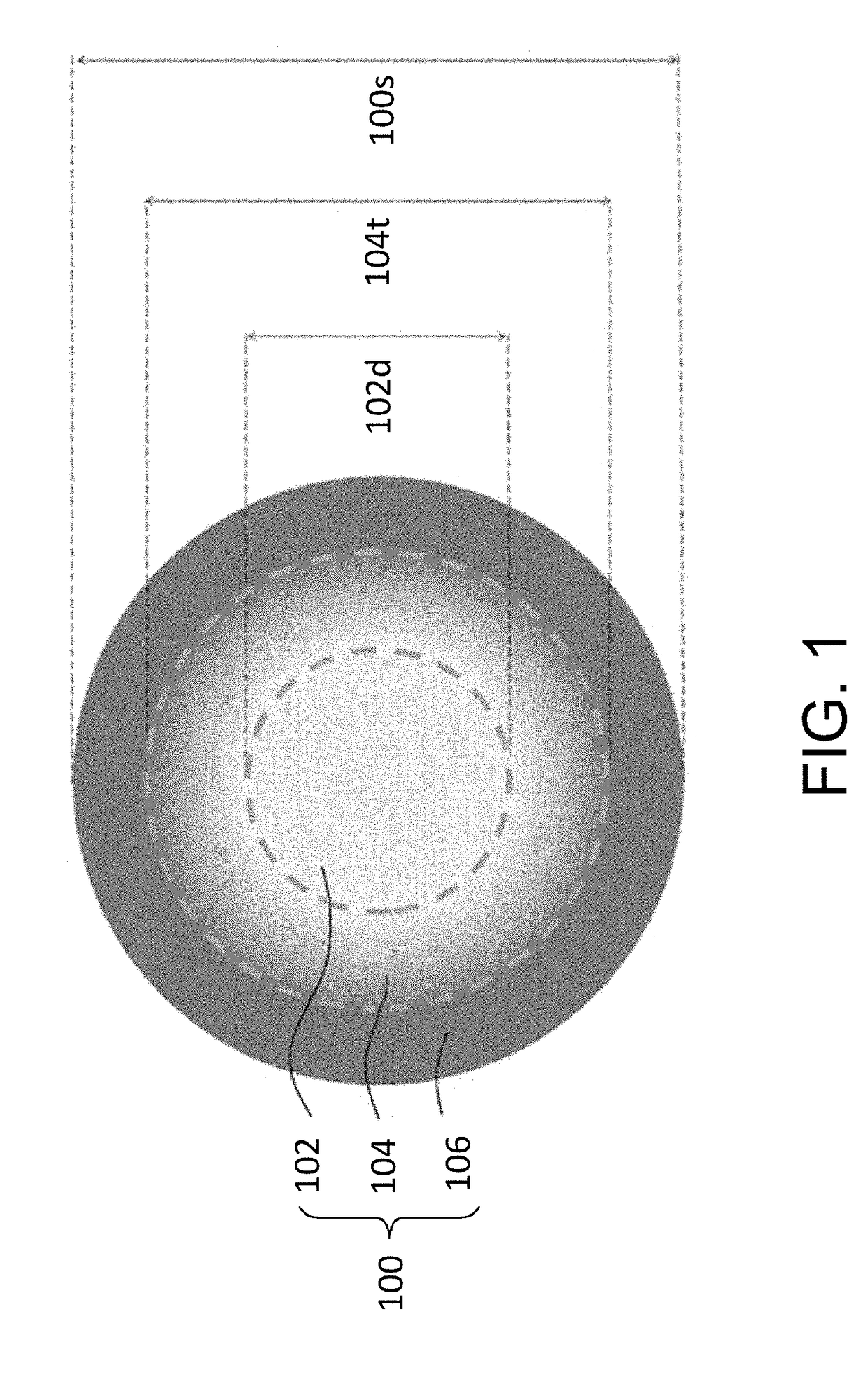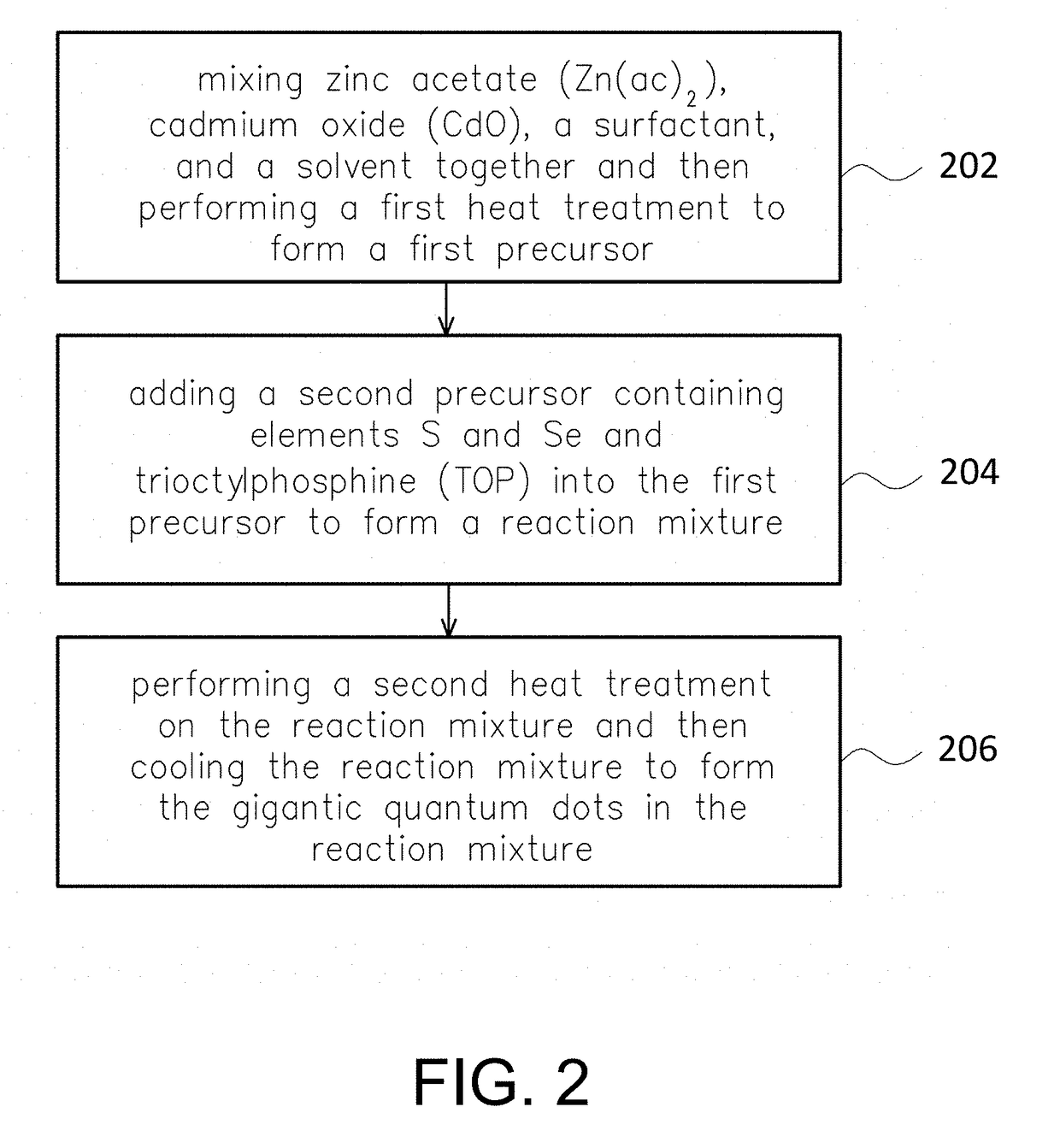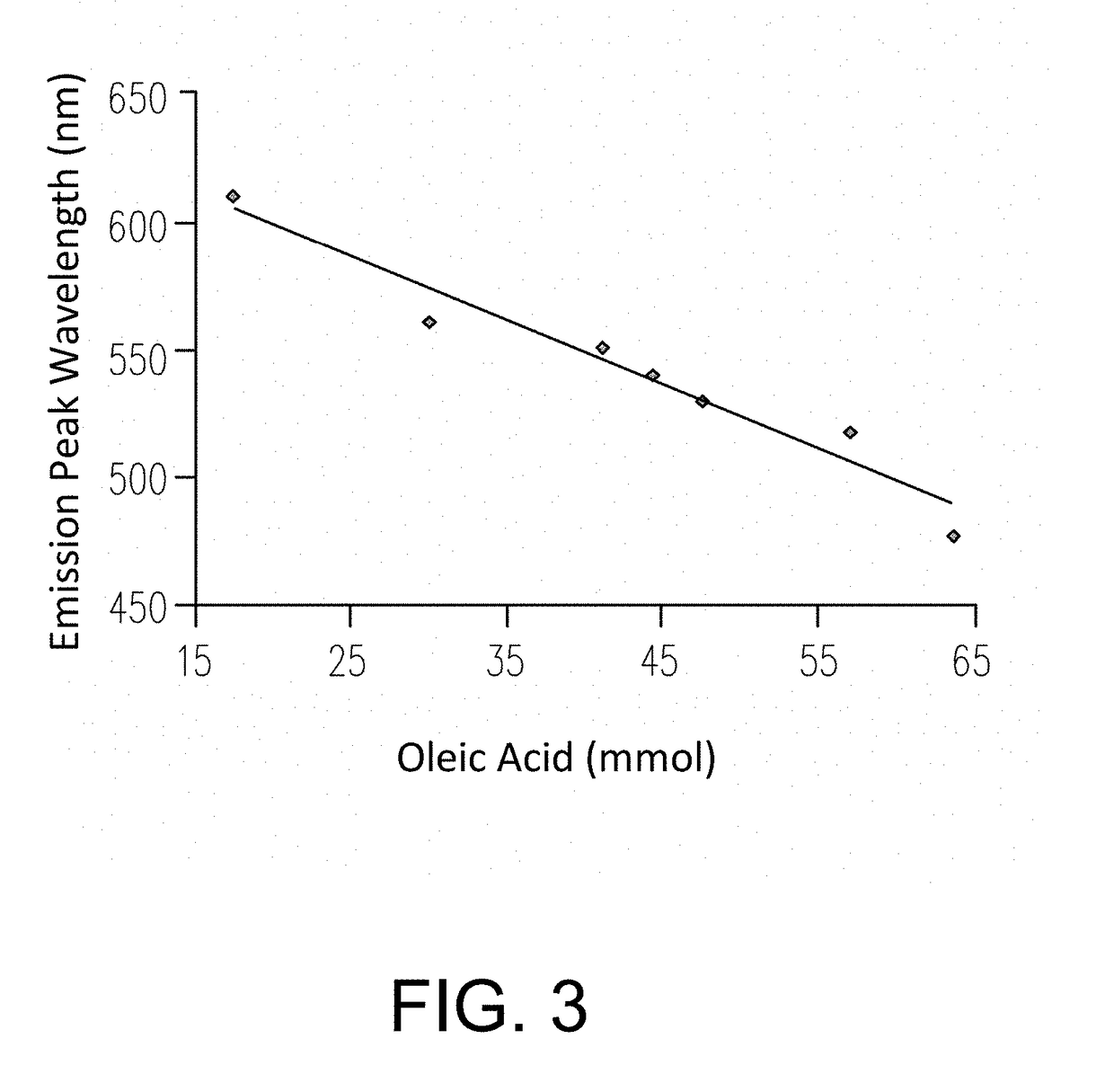Method of forming gigantic quantum dots
a quantum dots and quantum wave technology, applied in the field of quantum dots, can solve the problems of difficult to adjust the peak wavelength of qds emission, long-term stability, and high cost and lower emission quantum yield, and achieve the effect of increasing the long-term stability of the gigantic quantum dots
- Summary
- Abstract
- Description
- Claims
- Application Information
AI Technical Summary
Benefits of technology
Problems solved by technology
Method used
Image
Examples
example 1
[0040]12 mmol of Zn(ac)2, 0.864 mmol of CdO, 47.5 mmol of oleic acid (OA) and 45 mL of 1-octadecene (ODE) were added into a 100 mL flask under 1 atm at 260° C. to form a clear precursor solution. The clear precursor solution includes Zn-oleate and Cd-oleate. After the surfactant-metal complexes (i.e., Zn-oleate and Cd-oleate) were formed, the flask was filled with Ar or N2 and heated up to 310° C. When reaching the desired temperature, 6 mL of trioctylphosphine (TOP) containing 10.68 mmol Sulfur and 0.3 mmol Selenium was quickly injected into the flask. The reaction temperature was maintained at 300° C. for 10 minutes, then the reaction was cooled down to room temperature. The gigantic quantum dots (QDs) with equal to or more than 10 nm in diameter (or particle size) were formed. The photoluminescence (PL) emission peak of the gigantic QDs is 530 nm (i.e., green light) by irradiating of an ultraviolet light (e.g., 405 nm). The emission quantum yield of the QDs was 93%. The results a...
examples 2-7
[0041]The manufacturing steps of forming gigantic QDs of Examples 2-7 are similar to the above manufacturing steps of Example 1. The difference between Examples 1-7 is that a content of the surfactant (i.e., OA) adding into the precursor solution which shown as Table 1. The PL emission peak and emission quantum yield of Examples 2-7 are also shown in Table 1 and FIG. 3.
TABLE 1ExampleOA (mmol)Wavelength (nm)FWHM (nm)QY (%)147.505303393217.456103190330.085603692441.195503391544.365403492657.035202995763.354802891
[0042]FIG. 4 is a transmission electron microscope (TEM) image and high angle annular dark field scanning transmission electron microscopy (HAADF-STEM) image of quantum dots from Example 1. FIG. 5 is a transmission electron microscope (TEM) image of quantum dots from Example 2.
[0043]As shown in FIG. 5, quantum dots synthesized from Example 2 were observed under transmission electron microscope (TEM). The size of quantum dots is determined to be approximately 15 nm.
[0044]In add...
PUM
| Property | Measurement | Unit |
|---|---|---|
| temperature | aaaaa | aaaaa |
| temperature | aaaaa | aaaaa |
| particle size | aaaaa | aaaaa |
Abstract
Description
Claims
Application Information
 Login to View More
Login to View More - R&D
- Intellectual Property
- Life Sciences
- Materials
- Tech Scout
- Unparalleled Data Quality
- Higher Quality Content
- 60% Fewer Hallucinations
Browse by: Latest US Patents, China's latest patents, Technical Efficacy Thesaurus, Application Domain, Technology Topic, Popular Technical Reports.
© 2025 PatSnap. All rights reserved.Legal|Privacy policy|Modern Slavery Act Transparency Statement|Sitemap|About US| Contact US: help@patsnap.com



